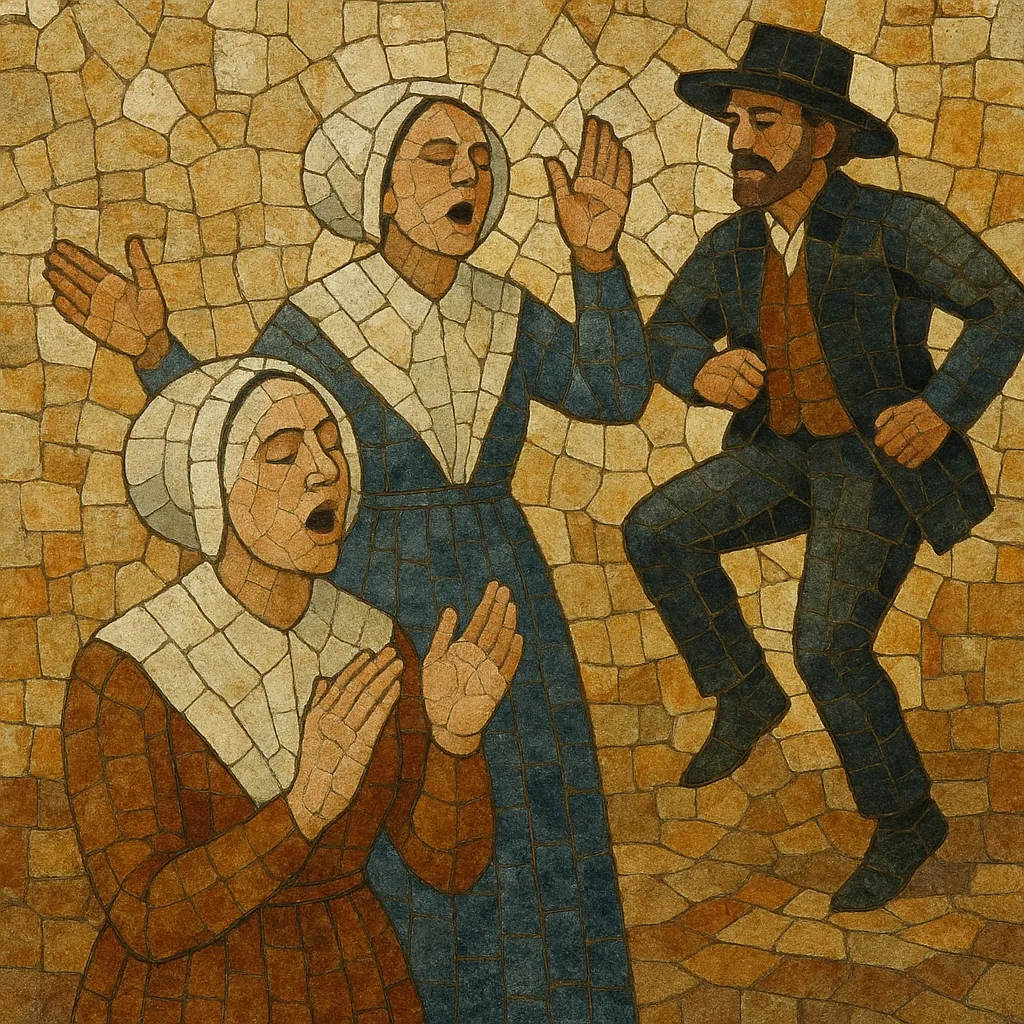
Shaker music is the sacred song tradition of the United Society of Believers in Christ’s Second Appearing (the Shakers), a communal Christian movement that flourished in the United States from the late 18th to the 19th century.
Characterized by simple, singable melodies, mostly unison (monophonic) textures, and clear, devotional texts, Shaker songs were created for worship that often included ecstatic movement and communal dancing. Many are strophic, diatonic, and frequently pentatonic or modal (often Mixolydian), with refrains designed for congregational participation.
The repertoire includes lively “dance songs,” work-like “laboring songs,” and visionary “gift songs” believed to be received through spiritual inspiration. Although largely a cappella, performances commonly incorporate body percussion (hand-clapping, foot-treading) and coordinated motions, reinforcing the music’s communal and devotional purpose.
Shaker music emerged with the Shaker movement’s establishment in America in the 1770s. While the sect’s roots were in England, the music took distinctive shape in the United States, serving a worship practice centered on communal singing, ecstatic praise, and sacred dancing. Early songs emphasized humility, simplicity, and collective devotion.
The repertoire expanded rapidly in the early 1800s, especially during the Shakers’ revivalist “Era of Manifestations” (c. 1837–1850s), when many “gift songs” were received as spiritual inspirations. Alongside lively dance-songs, this period produced tender, contemplative tunes and processional pieces. Texts were direct and practical, supporting a worship life that joined singing with embodied movement.
Shakers developed practical systems to preserve and share their music, including letteral and specialized Shaker notations, before increasingly adopting conventional staff notation later in the century. Text collections such as Millennial Praises (1812–1813) and later tune manuscripts helped standardize core repertoire across communities in New England, New York, Ohio, and Kentucky.
As Shaker communities dwindled, scholars and tradition bearers documented the music through field recordings, editions, and performances. The tune “Simple Gifts” (by Elder Joseph Brackett, 1848) gained wide public recognition in the 20th century, notably through Aaron Copland’s use in Appalachian Spring, and through countless choral and folk arrangements. Today, Shaker music remains an influential wellspring for choral repertoire, American folk revivals, and classical treatments of vernacular sacred song.

